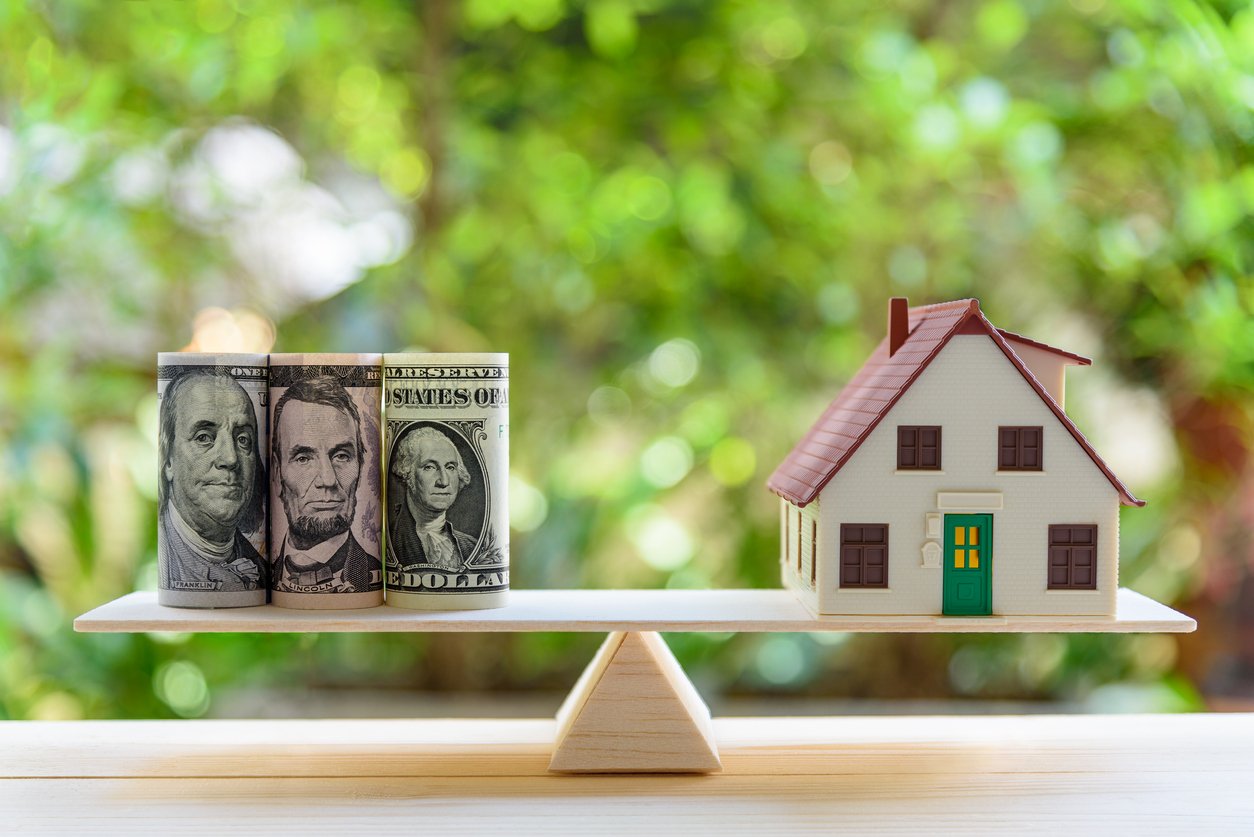Real estate investors use a variety of metrics to help analyze the potential profitability of a rental property. One of the most common calculations is cash-on-cash return. The formula is easy to calculate and understand, and helps an investor to understand how much money a property could or should earn each year.
Key takeaways
- Cash-on-cash return measures annual pre-tax cash flow compared to the total amount of cash invested.
- Unlike return on investment or ROI,which measures return over an entire holding period, cash-on-cash is the return over a specific period of time, usually 1 year.
- Cash-on-cash return may increase or decrease from one period to the next due to fluctuations in income, expenses, or additional cash invested.
Cash-on-cash return definition
Cash-on-cash return is an uncomplicated financial metric that compares total pre-tax cash earned to the total amount of cash invested. One simple example of cash-on-cash return is putting money into a savings account.
According to Bankrate (November 2021), the best savings accounts offer an interest rate of about 0.45%. That means an investor who puts $50,000 into a savings account can expect to generate a pre-tax cash flow of $2,250 ($50,000 cash invested x 0.45% interest rate).
In the real estate business, cash-on-cash return is sometimes referred to as “yield,” the “equity dividend rate,” or simply by the abbreviation “CoC.” Real estate investors use cash-on-cash return to measure the potential profitability of an investment based on the down payment amount or cash purchase price, plus any required improvements or upgrades.
How to calculate rental property cash-on-cash return
Cash-on-cash return is calculated using this formula:
- Cash-on-Cash Return = Annual Pre-Tax Cash Flow / Total Cash Invested
To illustrate how a real estate investor might use cash-on-cash return, let’s look at a single-family rental home with the following purchase price, down payment, income, and expenses:
Single-family rental: $150,000 purchase price
Down payment: $37,500 using an investor loan with 25% down
Rental Income:
- Gross monthly rent: $2,000
- Vacancy factor: - $100
Total Rental Income: $1,900
Operating Expenses:
- Property management: $160
- Insurance: $190
- Repairs & maintenance: $80
- Property taxes: $140
Total Operating Expenses: $570 per month
Total Pre-Tax Cash Flow without Financing: $1,330 per month or $15,960 per year
Mortgage Payment: $550 per month (principal & interest)
Total Pre-Tax Cash Flow with Financing: $780 per month or $9,360 per year
Examples of calculating cash-on-cash return
Now let’s calculate the potential cash flow from this single-family rental example using an all-cash purchase, a financed purchase, and scenarios where an investor has to make $1,500 in immediate repairs.
Cash Purchase
Cash-on-cash return = $15,960 annual pre-tax cash flow / $150,000 purchase price of home = 0.106 or 10.6%
Cash Purchase + Repairs
Cash-on-cash return = $15,960 / $151,500 (purchase price + repairs) = 0.105 or 10.5%
Financed Purchase
Cash-on-cash return = $9,360 annual pre-tax cash flow / $37,500 down payment = 0.25 or 25%
Financed Purchase + Repairs
Cash-on-cash return = $9,360 / $39,000 (down payment + repairs) = 0.24 or 24%
These examples also illustrate why some real estate investors use financing or leverage to increase potential cash-on-cash return.
Even though the annual pre-tax cash flow is lower when an investor finances the purchase, the cash-on-cash returns in these examples are more than double a cash purchase because there is less cash invested.
Factors that increase or decrease cash-on-cash return
Cash-on-cash return will generally stay the same assuming that income and expenses remain unchanged. But in the real world of real estate investing, rental income and operating expenses may change monthly and annually.
Some factors that can make cash-on-cash return from a rental property higher or lower include an increase or decrease in:
- Monthly rent price.
- Vacancy factor.
- Operating expenses.
- Renovation or updating costs.
- Property taxes.
- Down payment amount.
The following three examples illustrate how a cash-on-cash return can change from one year to the next.
Increase in rent price
Single-family rent growth has increased by 10.2% year-over-year, through September 2021 according to CoreLogic. Assuming rent prices increase by the same amount next year, the cash-on-cash return from the rental home purchased with financing used in the above examples would look something like this:
| Year 1 | Year 2 | |
| Rental income | $22,800 | $24,920 |
| Operating expenses | -$6,840 | -$6,840 |
| Mortgage expense | -$6,600 | -$6,600 |
| Pre-tax annual cash flow | $9,360 | $11,480 |
| Down payment | $37,500 | $37,500 |
| Cash-on-cash return | 25.0% | 30.6% |
Increase in expenses
Rental operating expenses generally do not increase when rent prices rise. However, factors such as inflation or supply shortages can cause expenses to go up from one year to the next.
According to the U.S. Bureau of Labor Statistics, the most recent Consumer Price Index (CPI) is 6.2% (as of October 2021). If operating expenses for the rental property in the above example increased by 6.2% next year, the cash-on-cash return would look something like this, assuming that rental income also increased:
| Year 1 | Year 2 | |
| Rental income | $22,800 | $24,920 |
| Operating expenses | -$6,840 | -$7,264 |
| Mortgage expense | -$6,600 | -$6,600 |
| Pre-tax annual cash flow | $9,360 | $11,056 |
| Down payment | $37,500 | $37,500 |
| Cash-on-cash return | 25.0% | 29.5% |
This example also illustrates why real estate is often considered a hedge against inflation. Even though inflation increases, rent prices may increase as well, sometimes more than the rate of inflation.
Decrease in rent price
Real estate markets historically also go through cycles where there is more demand than supply, and vice versa. Over the past 10 years or so, most residential real estate markets have performed well, but nothing goes in a straight line forever.
In this example, we’ll assume that rent prices decline by 9.3% due to overbuilding or lack of demand, while operating expenses inflate by 6.3%:
| Year 1 | Year 2 | |
| Rental income | $22,800 | $20,680 |
| Operating expenses | -$6,840 | -$7,264 |
| Mortgage expense | -$6,600 | -$6,600 |
| Pre-tax annual cash flow | $9,360 | $6,816 |
| Down payment | $37,500 | $37,500 |
| Cash-on-cash return | 25.0% | 18.2% |
The future performance of any investment can be difficult to predict, and rental property is no exception. However, by creating various cash-on-cash return forecasts using different scenarios, a real estate investor may be better able to select an investment that offers a balanced blend of risk and potential cash-on-cash return.
What is a good cash-on-cash return?
One way to think about cash-on-cash return is the amount of potential risk compared to the amount of potential reward. Some investors are more risk averse than others, so what’s good for one investor may be bad for another, with the opposite being true as well.
At the beginning of this article, we noted that the best savings accounts currently offer an annual yield or cash-on-cash return of 0.45% (according to Bankrate as of November 2021).
An investor may use this return as a benchmark that other potential returns are measured against. In other words, anything above 0.45% is a good return, depending on an investor’s risk tolerance.
Two examples are purchasing a rental property for cash and financing the purchase. The cash-on-cash return is lower when a property is purchased using all cash, because there is no risk of defaulting on a mortgage and having a lender foreclose on a property.
On the other hand, when a property is financed, the cash-on-cash return is higher but there is also the potential risk of default if a borrower is unable to make the monthly mortgage payments. That’s one reason why real estate investors often make a down payment of 25% or more on a rental property loan. A lower loan-to-value (LTV) ratio means there is more monthly cash flow available if rent prices decrease, or vacancy levels and operating expenses increase.
One good way to get an idea of the current cash-on-cash returns for single-family rental homes is to visit Roofstock.
At any one time, the Roofstock Marketplace has hundreds of rental properties listed for sale in over 70 real estate markets from coast to coast. Investors can shop for turnkey rental property using search metrics including higher yield, annual appreciation, and cap rate.
As you're doing your research, you should also note that each market will have varying returns. This is because real estate is local and things like home prices, rent, insurance, and property tax vary by location.
Is return on investment the same as cash-on-cash?
Some real estate investors use return on investment (ROI) and cash-on-cash return interchangeably. However, ROI differs from cash-on-cash return in two ways:
- ROI measures the potential return on a property over the entire holding period, whereas cash-on-cash return is a measure of the annual pre-tax cash flow compared to the cash invested.
- ROI accounts for all money invested in a property, including mortgage debt, while cash-on-cash return focuses on the actual amount of cash invested.
An accurate return on investment calculation also depends on an investor knowing what the fair market value of a property will be at a future point in time. While it’s possible to periodically update property market value, the true ROI of a specific investment is known only when the property is actually sold.
By comparison, an investor knows how much cash was invested and how much annual pre-tax cash flow a property is generating by reviewing the annual income and net cash flow reports.
Wrapping up
Cash-on-cash return is a quick and easy way to calculate the current or predicted returns from a rental property based on the actual cash invested. When used with other financial metrics such as ROI, internal rate of return, net operating income, and cap rate, an investor may use cash-on-cash return to create a comprehensive overview of the potential return from income producing real estate.











